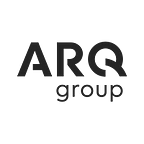In the early stages of product design, it is easy to make assumptions about what your users need or want. Product design usually begins by evaluating a target market and addressing a gap or opportunity, and it is easy at this stage to allow internal bias and business drivers (such as profit or growth) to dictate product features.
Ideally, a business will develop a product that helps to increase the bottom line and grow market share, but simply designing a product based on what the business thinks their users will want is a risky choice. It’s essential that the hypothesis you have formulated about the usefulness or desirability of product is tested and validated by the customers you intend to target.
There are four key stages of the design process that help to solidify a product hypothesis:
- Exploring the current state — what problems need to be solved?
- Visualising possible future states — how do we solve these problems?
- Seeking out the “wow” factor and evaluating risks
- Testing your concepts, iterating, and failing early
Following this process helps to ensure that product design is user-centric. It is critical to test your theories with real users; to validate that your solution is empathetic to the problems that they are facing and provides them with real value.
Testing your theories
Rapid prototyping is the art of creating a tangible asset that your potential users can interact with. In the early stages of product design, prototypes are a powerful way to validate your concepts and the overall hypothesis that you established about why and how your solution will deliver value to users.
Prototypes can help answer the following questions:
- Does our solution idea make sense?
- Have we understood our users’ requirements?
- Will all the components of the solution work together as intended?
- What can we learn from watching our users interact with the product?
- What features are essential for a Minimum Viable Product?
Failing fast
While prototyping is a great way to validate what users want, the primary goal of prototyping should be to discover what doesn’t work in a low risk, low cost manner. By discovering what fails early in the product design lifecycle, businesses can avoid the pitfalls associated with investing in the development of product features that fail to deliver on their expected potential.
Where you are in your design process dictates what type of prototype will deliver the right amount of feedback for the effort involved in creating it. At the beginning of the design process, you may have quite low fidelity assets such as “back-of-the-napkin” sketches or rough wireframes. The more time you spend developing the concepts and designs, the more polished your assets will become. High fidelity prototypes such as interactive mockups or 3D models are likely to be available later in the design process.
Eliciting early feedback based on low fidelity assets gives users greater freedom to be really honest in their reactions. When a design appears to be the product of a large amount of work, users are more likely to feel uncomfortable about giving negative feedback. The focus of user feedback is also likely to be on the granular details of the design they are presented with, such colours, fonts, and iconography, rather than more systematic feedback about the overall user journey and value of the product’s features.
Rapid prototyping techniques
When it comes to developing software, mobile or web applications, there are a few tools and techniques that can be employed to deliver a working prototype.
Wireframes are a low fidelity tool that illustrate the basic placement of features and may also indicate basic interactions. They are devoid of colour and style, and focus on function rather than form. These can be simple hand sketches, however software tools such as Balsamiq make it easy to simulate interactions and create click-through prototypes.
Paper prototyping takes wireframe concepts and transforms them into an interactive model. They can be used to guide users through various actions and are an effective tool for eliciting feedback and getting insights into how a user might interact with particular features, as well as helping users validate what they see as being important and impactful.
Paper prototyping literally means building your prototype out of paper, card stock, post-it notes, glue, scissors, sharpies, staples, and BluTack. The aim of the game is to simulate interactions, transitions, and click-throughs so that the user can provide feedback around what makes sense, where they get stuck, what works well or as intended, and most importantly, if there is anything that either doesn’t add value or doesn’t work well. It also helps to highlight what is missing.
A prototyping tool such as InVision is great way to take even very low fidelity wireframes or sketches and turn them into a prototype that users can experiment with in context; meaning they can interact with it either on their mobile device or PC.
In software and application development, the trajectories of the design process and the validation of user requirements are closely coupled. The further along the design path you go, the more accurately users are able to validate whether or not what you are building will satisfy their needs and ultimately deliver something they are willing to invest in. Getting feedback early through effective prototyping techniques can make a big difference to the successful uptake of your product within your target market.
Melissa Khim is a Business Analyst at Outware Mobile
Originally published at www.outware.com.au.
